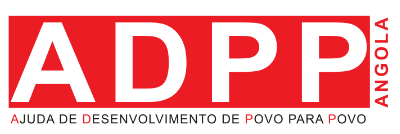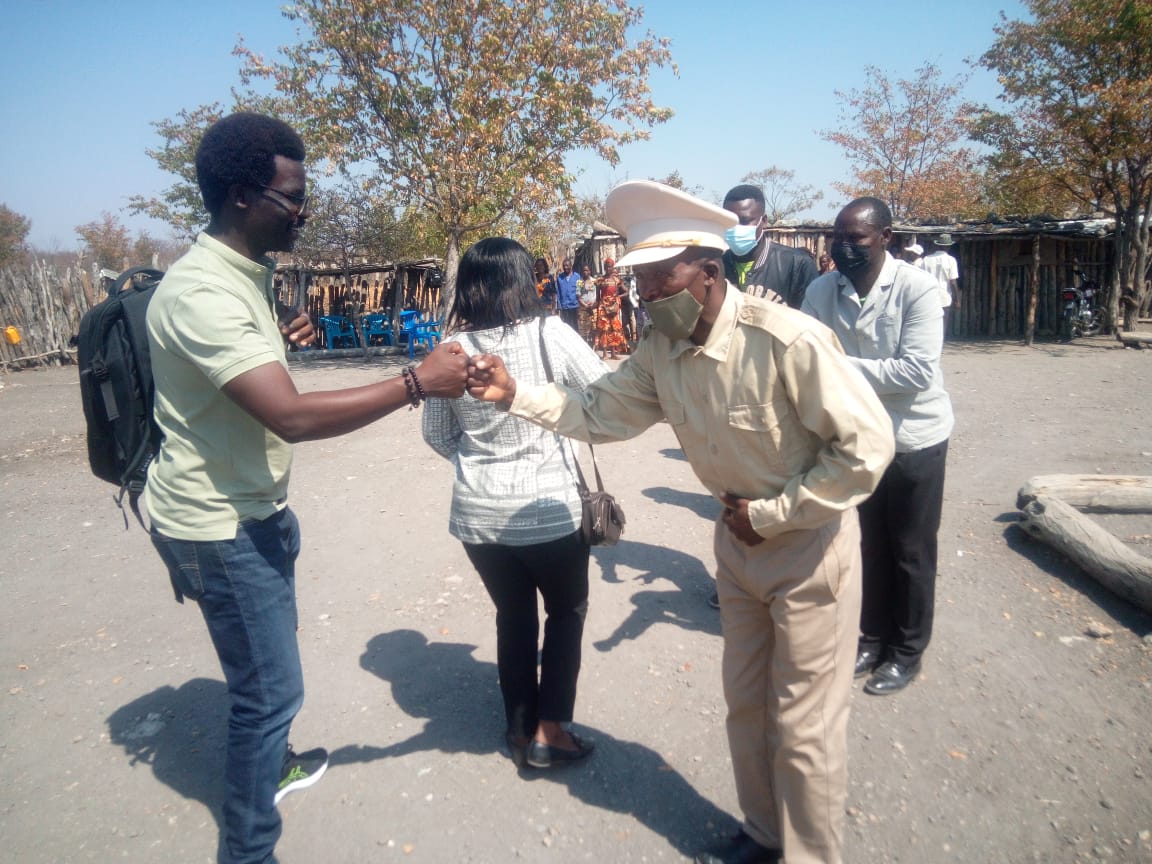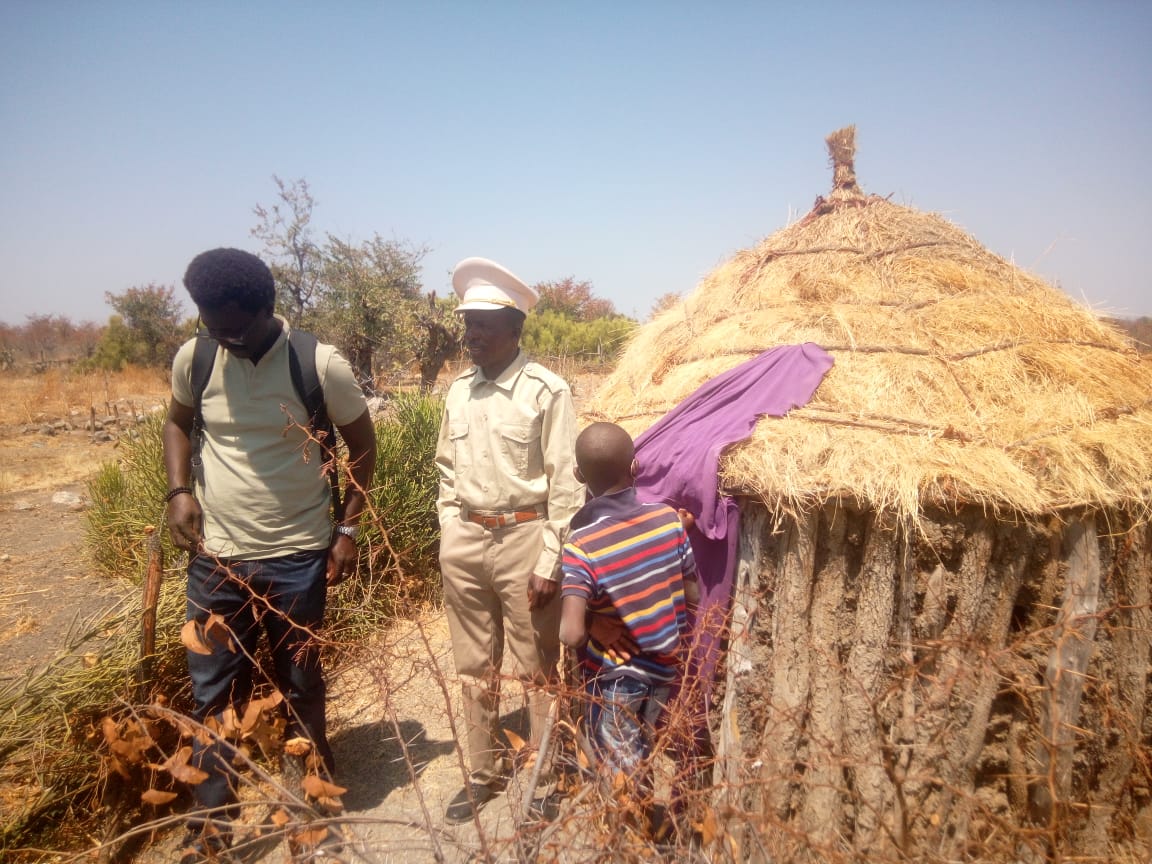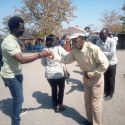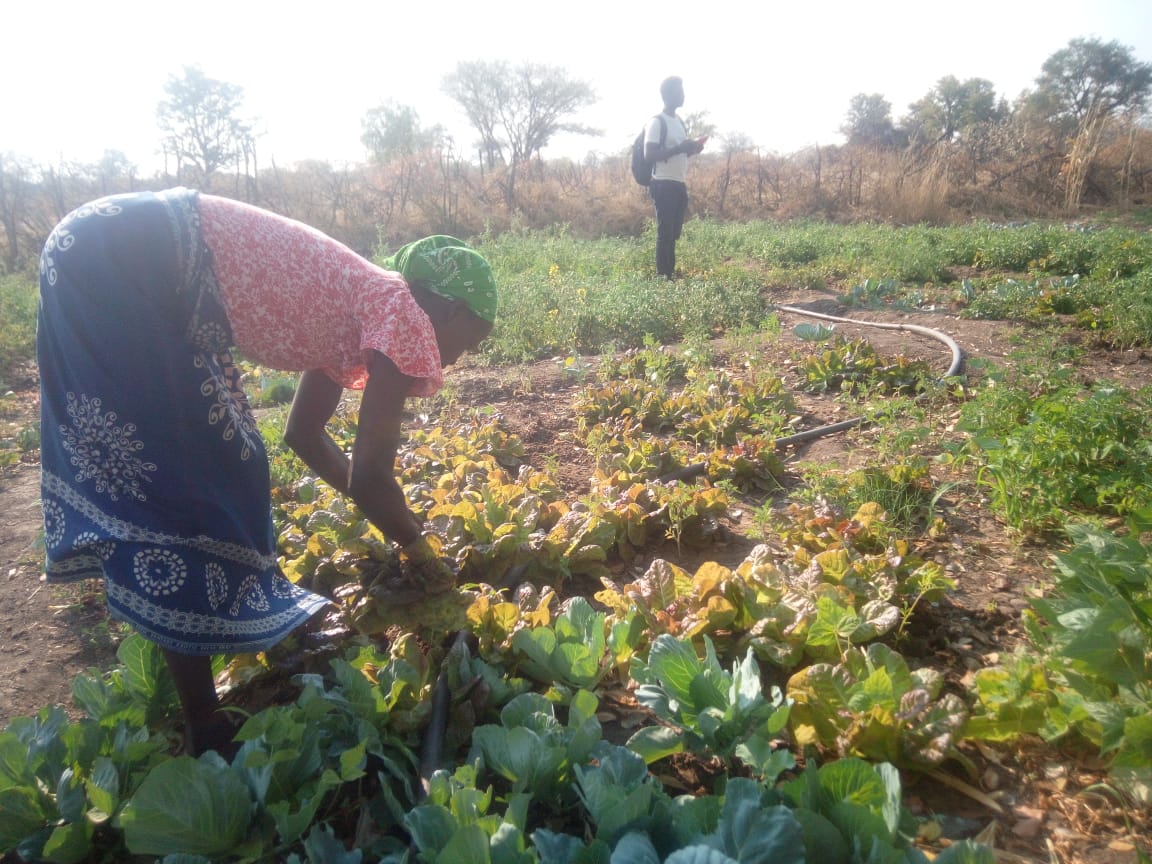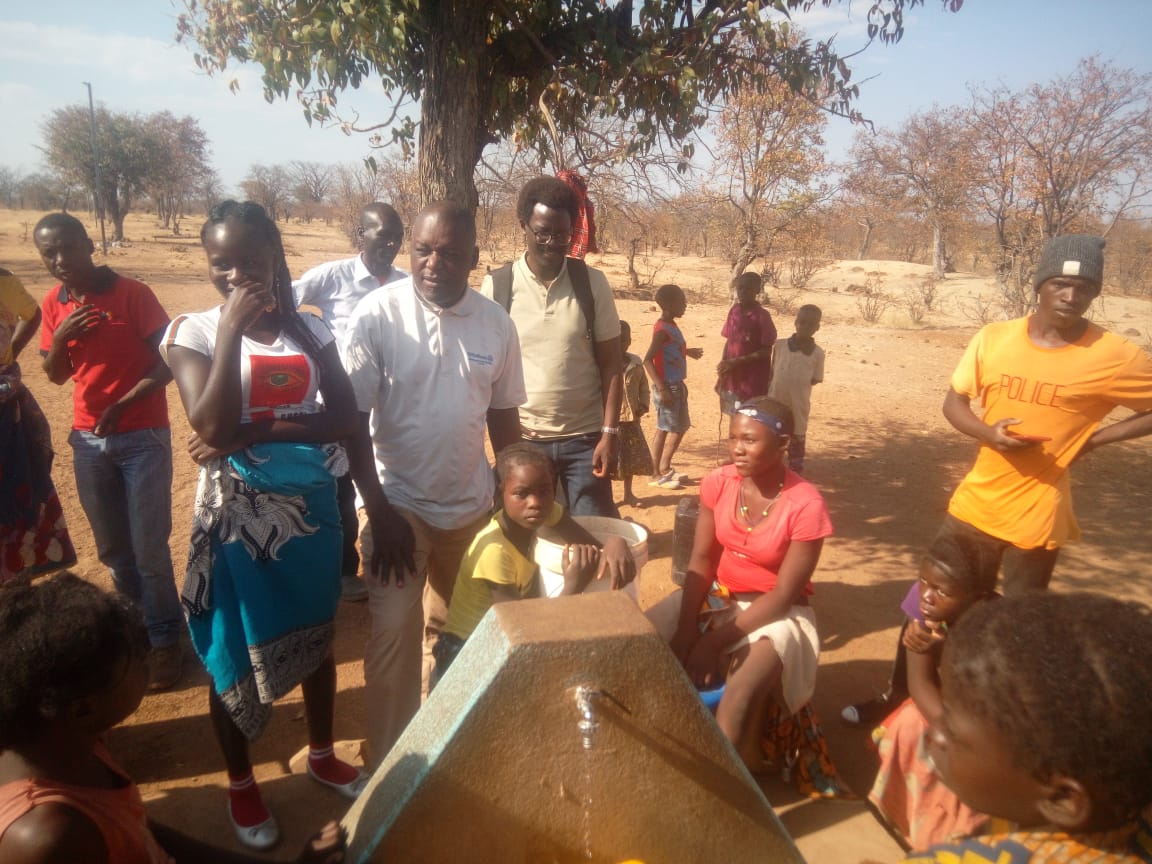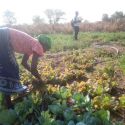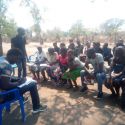Community involvement in evaluations is just as important as involvement in the design and implementation of a project. When Moisés Lopes, an external consultant hired by ENI, was part of a team which visited the Integrated Community Project in Gambos and Bibala to evaluate progress and results to date, the visit involved traditional leaders, neighbourhood coordinators, focal groups, municipal authorities, Community Health Agents, families at their homes, teachers and pupils in schools, farmers in their fields, and the project team itself. Moisés Lopes saw for himself the measures being taken to improve basic sanitation, from household latrines, tippy tap systems for hand washing and drying racks, to disease prevention messages through theatre performed by school patrol pupils. In-service teachers explained about the personal and professional benefits of attending 40 Pedagogical Sessions organised by the project, and literacy learners showed how far they had come in learning to read and write. Members of Farmer Field Schools welcomed Moisés Lopes to their vegetable gardens, where they proudly displayed the variety of produce under cultivation. School headmasters, Water & Sanitation Groups and Communal Administrators spoke of the impact of the project, and the various improvements in education, health, agricultural production and general well-being. Visits to health posts and schools with improved water supplies and solar energy installations were included, as was a visit to the sewing workshop where participants displayed their new skills and innovative money earning capacity.
ADPP organised meetings with members of the community to give Moisés Lopes the opportunity of asking about the project, and hearing directly from those present.
At the end of the week of visits, meetings and question & answer sessions, Moisés Lopes met with the project team in Gambos to discuss topics such as the positive aspects of the project for the community, improvements registered since the project was implemented, further improvements that could be made if the project continued, and any changes that could or should be made taking into account the reality of the community.
For all concerned, the visit was fruitful, whether in terms of witnessing at first hand the effect of the project on individuals and on whole communities; having an opportunity to explain about and demonstrate personal examples of change and improvement; or being able to share remarkable achievements with unbiased observers.
